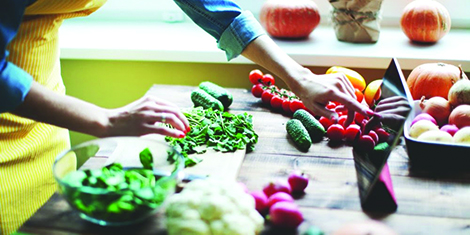Does eating a healthy, nutritious and satisfying diet without breaking the bank seem like an impossible task? Think shopping at upscale grocery stores like Whole Foods, ordering high-end take-out, or expensive meal kits are the best options? Not so, says Manasa Rajan, lead nutritionist at Cure.fit, who shares five ways you can eat clean and healthy while on a budget.
Cure.fit is an integrative health app that includes all facets of a healthy lifestyle on one platform. It has holistic health offerings across physical fitness and workouts, healthy food, and mental well-being. The platform offers delicious and healthy recipes that range from soups and salads to world cuisine and vegan food.
Here are Rajan’s thoughts on how you can eat healthy on a budget.
Buy Bulk
Delicious, budget-friendly nutrient-packed ingredients like quinoa, rice, lentils, nuts and beans can be bought in bulk bags and keep safely for months. Packed with dietary fiber, protein, B vitamins and many other important vitamins and minerals they’re a tasty, versatile, healthy and easy to store low-cost protein to have on hand. Select two or three varieties of whole grains, legumes (pulses), seeds or beans per month and prepare them ahead of time for use in different dishes throughout the week.
Quinoa can be base of salad, mixed with curry or gravy for an Asian or Indian meal
Oats (rolled or steel-cut) can be cooked in water with warming spices like dried ginger and cinnamon along with fresh or dried fruits. A batch can be stored in the refrigerator and quickly warmed up for a comforting breakfast or snack.
Black beans are perfect for Mexican-style bowls, soups, salads and wraps. Chickpeas are great whizzed up into a large batch of wallet-friendly dips, sandwich spreads or hearty salad dressings – adding different spices or in-season vegetables like red peppers gives extra flavor, variety and vitamins.
Garnish with nuts and seeds to add crunch and heart-healthy polyunsaturated fats and monounsaturated fats.
Select Seasonal
All produce has the highest nutrition, most flavor, and lowest cost when they are in season.
Fall is the perfect time to start, as our bodies crave warming foods during colder months – cinnamon, dried ginger, etc. – to increase ‘digestive fire’ the body’s ability to breakdown and digest food and absorb nutrients
Buy in bulk when fruits are at the peak of ripeness to naturally increase the variety of fresh fruit in your diet (strawberries in spring, peaches in summer, apples in fall) Add fruits (and veggies) to oats, stews, wraps and salads to get more fiber, antioxidants and vitamins
Prep Meals
Plan ahead and prepare a few of healthy ingredients that can be combined into various dishes quickly and easily. Use whole foods from your pantry or seasonal produce and have them handy to create interesting meals for a family or singles.
Make it a routine. Soak lentils, beans grains, and oats overnight on Saturday and on Sunday prep meals for the week Chop and prep seasonal produce, portion it in single-serving containers, and it’s ready for snacks, salads, soups, and stews Combine prepped ingredients like rice, beans, and veggies into super healthy and satisfying stews and soups
Create Custom Snacks
Everyone is looking for healthy snacks. Supermarket snacks, especially energy bars and mixes, are expensive, especially the single-serve options. They often contain questionable ingredients, excess packaging and sometimes are roasted in oil which can become rancid over time. In-house-made snacks are a cleaner, healthier, and less-expensive option – and can be pre-portion if required.
Bake homemade trail mix and personalize it with favorite or seasonal dried fruit and nuts as well as fruit zest, coconut, crystallized ginger, or chocolate nibs
Create an energy bar with dates, nuts and spices. It doesn’t take much effort to prepare, shape into cubes and wrap
Avoid high-price, high-fat bakery-shop desserts

Make a different dressing, sauce or dip each week to add flavor, nutrients, and variety to meals without the added cost, fats/oils, and sodium of packaged condiments.
Create a ‘base’ sauce (hummus or salsa) and add new flavors like roasted peppers, rosemary, basil, cilantro for variety, minerals, and antioxidants
Try making a batch of homemade tahini, peanut Asian sweet-spicy sauce, cilantro or mango chutney to use on wraps, salads, bowls, grilled vegetables or meats.